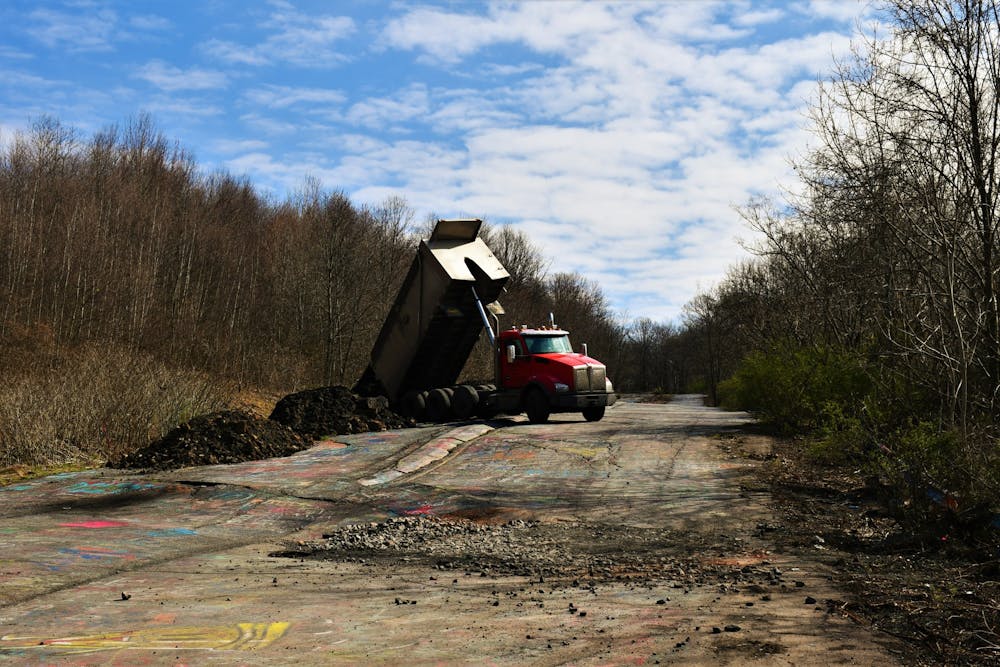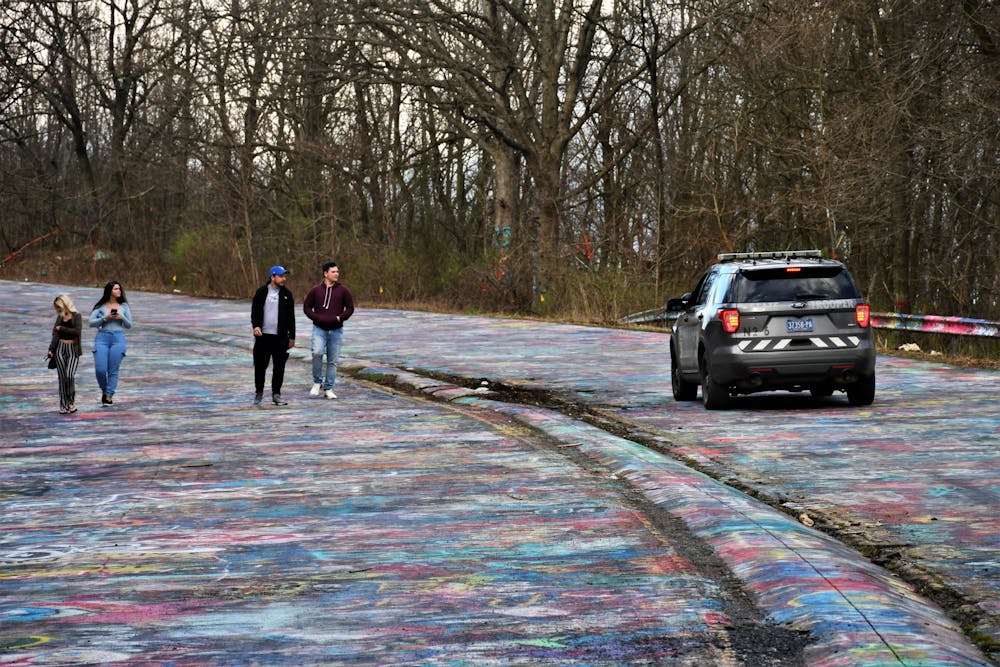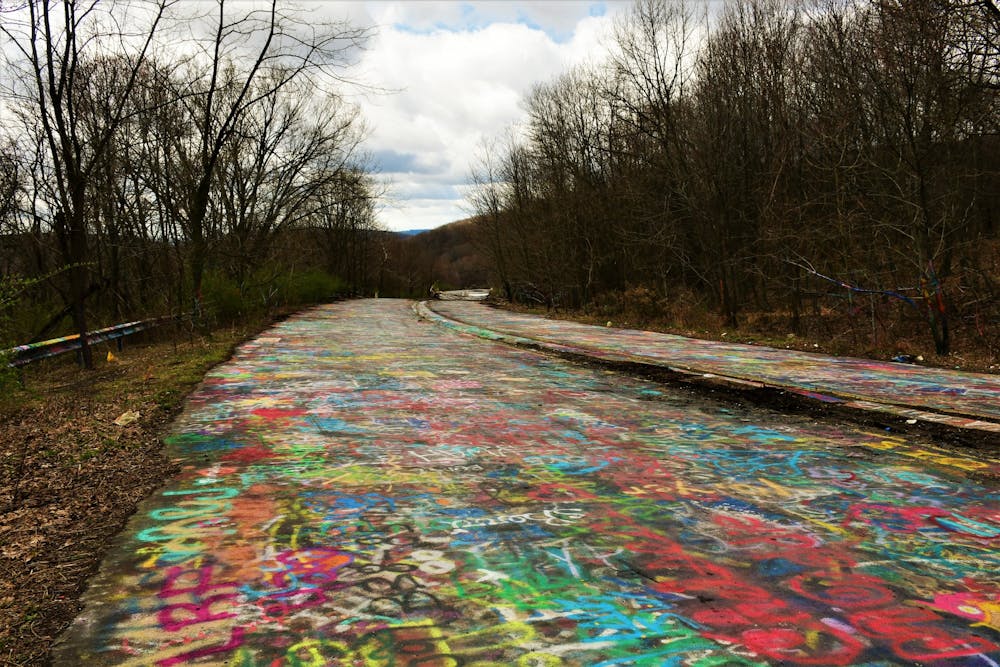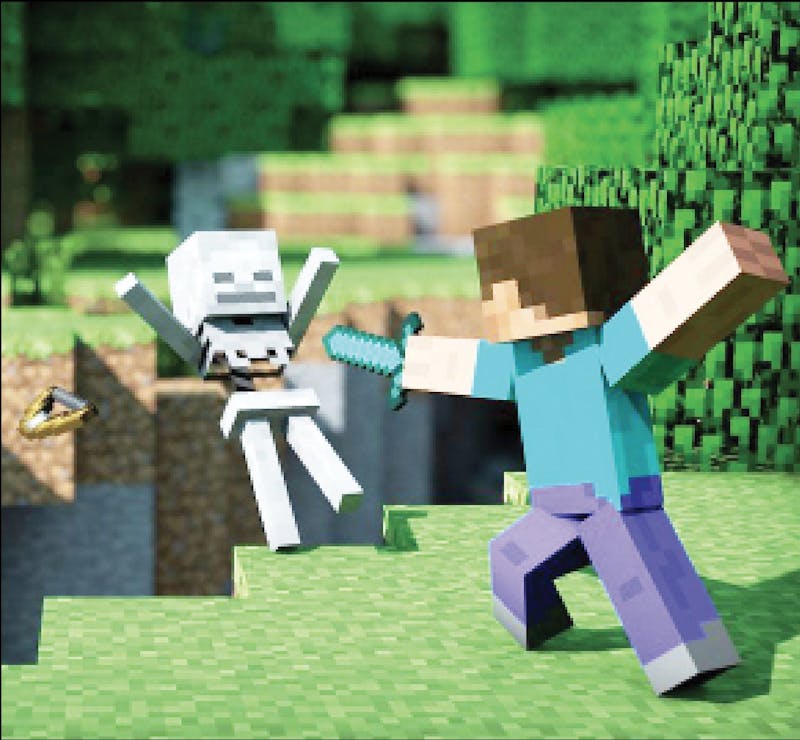For many decades, tourists have traveled to Centralia’s colorful Graffiti Highway to create art, take photos or simply admire the site’s beauty.
However, new generations of tourists will not have that opportunity.
The abandoned highway, formerly part of Pennsylvania Route 61, closed to the public in 1993, according to the Pennsylvania Department of Environmental Protection. It was shut down due to damage caused by the continuously burning Centralia underground coal mine fire.
The road is privately owned by Pagnotti Enterprises, but continues to draw visitors. Some admire the graffitti, while others ride dirt bikes and ATVs. Graffiti Highway is a cultural landmark for many Pennsylvanians — a reminder of how beautiful things can arise from awful situations.
The owners of Graffiti Highway closed the site earlier this month, covering it with between 8,000 and 10,000 tons of dirt, The (Sunbury) Daily Item reported. The highway will become a field filled with trees and flowers, eliminating all of the creative graffiti and attractive imagery.

Although the road is privately owned, one must consider if it is really necessary for the site to be closed.
Many believe that the site should remain untouched because of its sentimental and cultural value, while others believe that the site should close for the safety and well-being of the others. While one’s private property should be respected, what happens when the property becomes a local or regional landmark?
The Graffiti Highway is a work of art, showcasing creative human expression. The work which encompasses it belongs to everyone.
In a petition to save the highway on Change.org, Nick Minnich said Graffiti Highway is an important, sentimental cultural landmark and should remain open. As of Tuesday morning, more than 33,000 people have signed a petition to save Graffiti Highway. Supporters believe it is some of the most unique and beautiful artwork, and has more to offer.
The highway draws out-of-state visitors to admire its beauty. By removing Graffiti Highway, there will be a negative economic impact. While there are few residents remaining in Centralia, the businesses of surrounding towns may suffer without the travelers seeking the highway.
A piece of Centralia and Pennsylvania history is lost through the closure.
However, there are reasons why it may make sense for the landmark to close.
Despite its adoration, some visitors lacked respect for the land. According to various reports, many empty spray-paint cans, bottles and other trash were left behind after visitors went home.
Some groups gathered to clean the beloved highway, but it was only temporary. The trash reappeared. The public failed to keep the site clean.
Private property should be valued. Destroying and leaving trash at a private venue is disrespectful. The signs at the venue discouraged trespassers, yet the highway was still a highly visited area. The least one could do after walking on private property is clean up after oneself.
The owners’ frustrations are understandable. Afterall, how would we feel if someone walked on our property and left trash all over?
Additionally, the former highway is a safety issue. The area presents several risks to visitors on the road. Smoke from the fire below the popular tourist destination rises from portions of the unstable road, creating potential danger — and liability — for the private owners.

The dangerous conditions pose an increased risk for trespassers wandering around the site. Dirt-bike riders have been severely injured in accidents while riding on the abandoned highway, according to Coal Region Canary.
Traveling to the site to take pictures for the perfect Instagram upload could result in a trip to the emergency room if one is careless.
Furthermore, during the COVID-19 coronavirus crisis, visitors ignored stay-at-home orders and social distancing measures, and flocked to travel the Graffiti Highway. Closing down the site during the coronavirus pandemic will help keep people inside and eliminate some non-essential travel.
Why would a private owner open up his or her property to the public if the public is actively breaking laws and disrespecting the land? Is it worth their own liability to provide a place of creative expression?
As a society, we must make our voices heard when something we value is in danger. For those who value the creative expression and ideas the highway represented, there needs to be another outlet.
It is important to maintain public safety. If there are safe stretches of Graffiti Highway, they could have been saved for public use. The owners could have created a park or attraction area to encourage tourists to visit, deterring them from dangerous areas. Even if the owners had no interest in allowing the public to freely roam the road, pieces of the highway should have been saved to place on display at local museums.
Although there are other mediums for self-expression, Graffiti Highway is a culturally significant site in Pennsylvania. While nothing can replace it, perhaps there are other options for self-expression in unconventional, natural venues.
Near Breezewood, a couple of hours southwest of Centralia, are 13 abandoned miles of the Pennsylvania Turnpike. According to PABucketList.com, it already functions as a bike trail and frequents visitors. The abandoned road is a safer alternative to Graffiti Highway. This area would serve as a perfect option for tourists to do similar activities as they did in Centralia.



The Slate welcomes thoughtful discussion on all of our stories, but please keep comments civil and on-topic. Read our full guidelines here.